Published Mar. 4th by Trish Walraven in dentalbuzz.com
This is polyethylene:
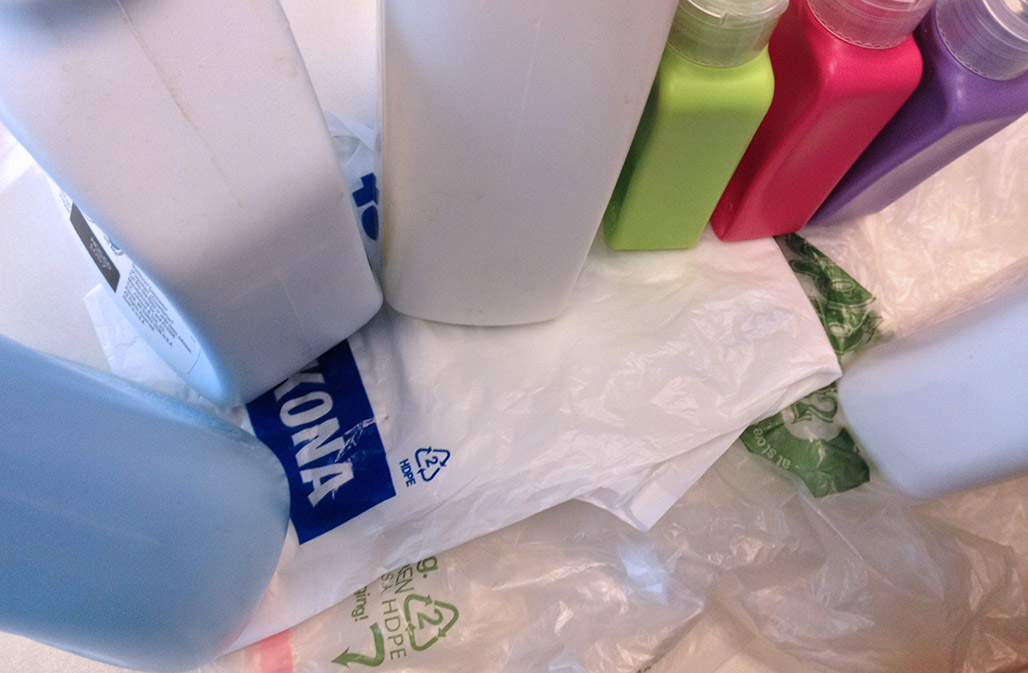
This is also polyethylene:
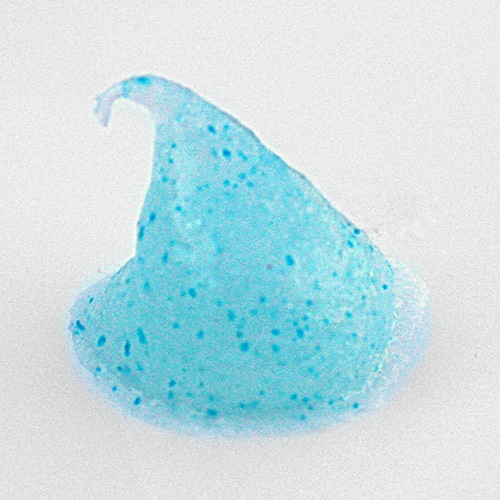
Well, not all of it. Most of it is toothpaste. But do you see those
blue specks? That’s plastic. This is the suggested pea-sized amount that
you should use when you brush your teeth. Yes, there is plastic in this toothpaste.
Want to see how many pieces of plastic are in this exact sample?
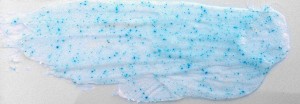
Not that I’m counting the bits but that seriously looks like A LOT of plastic… err…high density polyethylene. That’s what plastic trash cans are made from! If you throw away the box like most people do, the ingredients aren’t actually listed on the tube (sneaky, sneaky, Procter & Gamble!) However, I was able to track down the box here at this link. We’re not talking about polyethylene glycol, which is soluble in water. This stuff won’t dissolve in water, or even acetone or alcohol for that matter. How do I know it won’t dissolve? Because I put on my little scientist hat and tested it.
Like many of you, we often let our daughter pick out her own toothpaste at the store. She liked the tween vibe of this particular product so much that she chose it twice, but eventually the squeezed-out tubes ended up in the back of her toothpaste drawer.
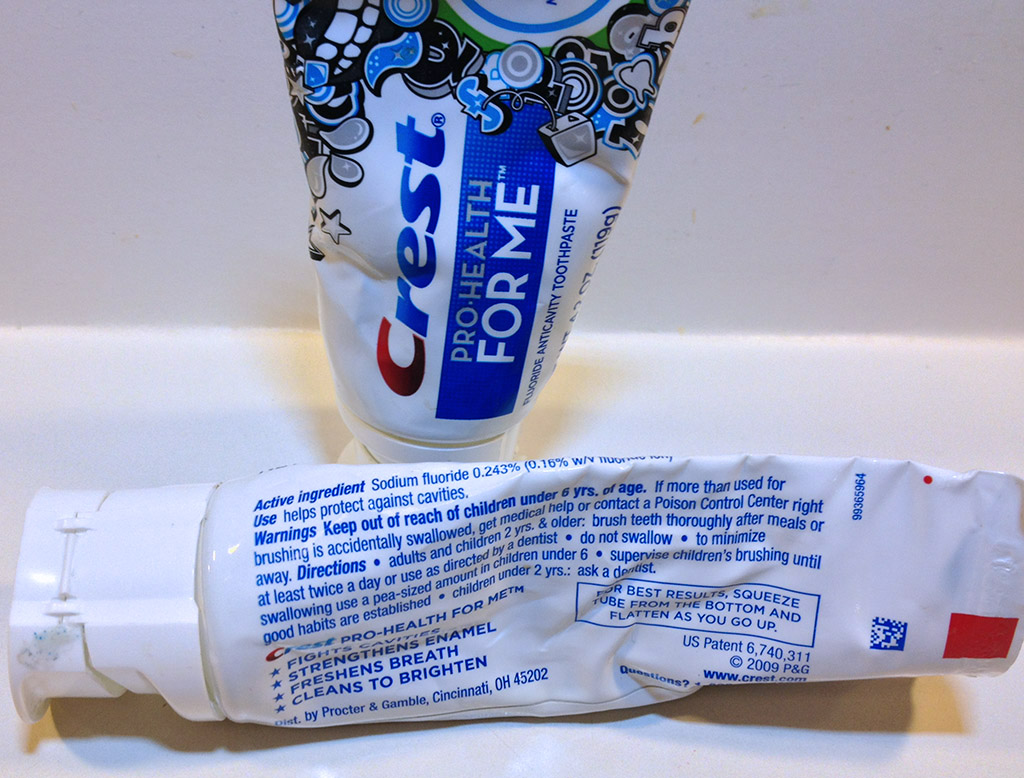
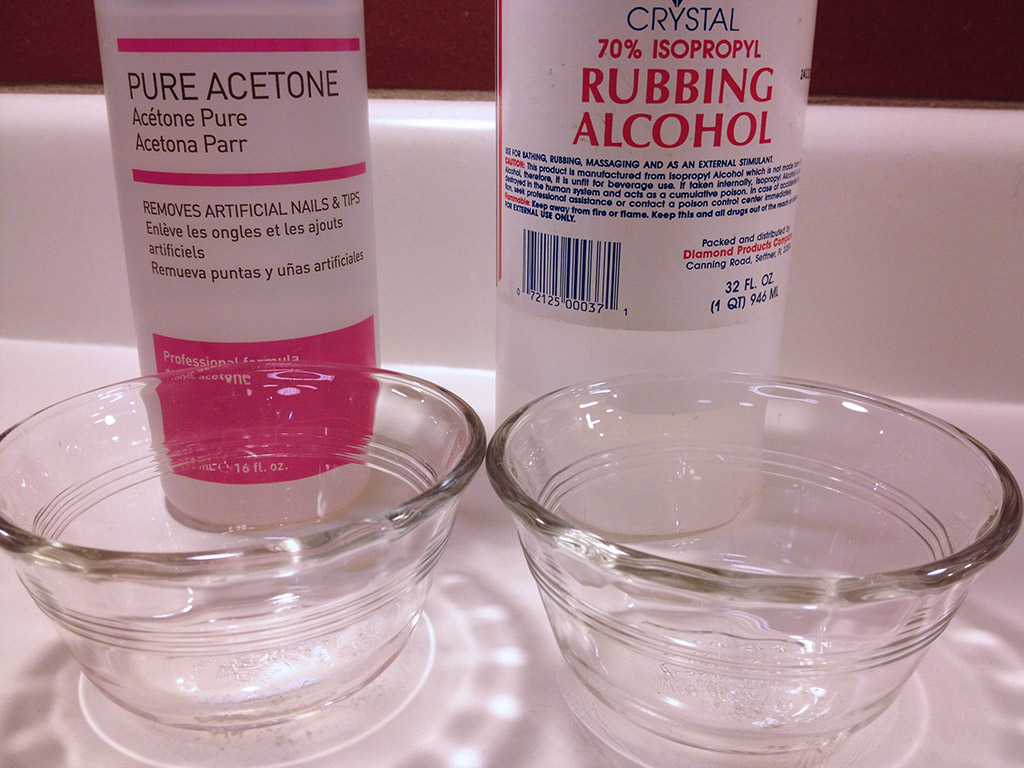
They didn’t dissolve in the acetone, (nail polish remover) or in the alcohol either. I even left the samples in the solutions overnight, then re-hydrated them. No change in the particles.
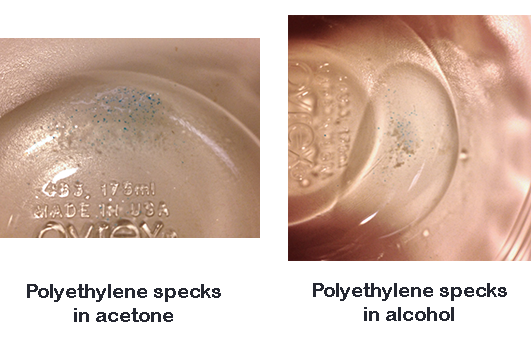
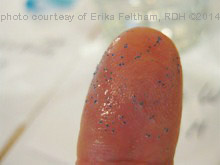
So it has been established here that
polyethylene will not dissolve in the mouth, or even in household
products. It is an inert substance, which means that it doesn’t change
at all. You know, that’s pretty good in some ways, because at least it’s
probably not morphing into big blobs of plastic evil cancer bait.
Here’s where the story gets scary, though.
You see, I’m not just a concerned mom. I’m also a dental hygienist. And I’m seeing these same bits of blue plastic stuck in my patients’ mouths almost every day.
Around our teeth we have these little
channels in our gums, sort of like the cuticles around our fingernails.
The gum channel is called a sulcus, and it’s where diseases like
gingivitis get their start. A healthy sulcus is no deeper than about 3
millimeters, so when you have hundreds of pieces of plastic being
scrubbed into your gums each day that are even smaller than a
millimeter, many of them are getting trapped:
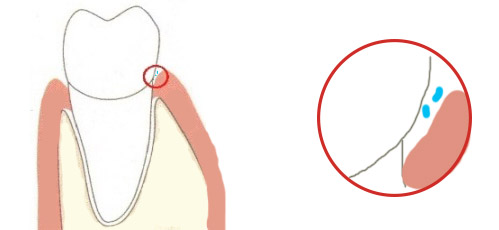
The thing about a sulcus is that it’s
vulnerable. Your dental hygienist spends most of their time cleaning
every sulcus in your mouth, because if the band of tissue around your
tooth isn’t healthy, then you’re not healthy. You can start to see why having bits of plastic in your sulcus may be a real problem, sort of like when popcorn hulls find their way into these same areas. Ouch, right?
Like I said, I’ve been seeing these blue
particles flush out of patients’ gums for several months now. So has the
co-hygienist in our office. So have many dental hygienists throughout
the United States and Canada who have consulted with each other and
realized that we have a major concern on our hands.
This is what an actual polyethylene speck looks like when it’s embedded within the sulcus, under the gumline:
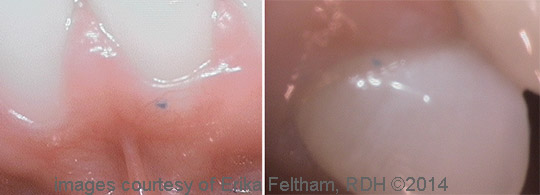
I am not saying that polyethylene is
causing gum problems. I’d be jumping too soon to that conclusion without
scientific proof. But what I am saying definitively is that plastic is
in your toothpaste, and that some of it is left behind even after
you’re finished brushing and rinsing with it.
Do you want plastic in your toothpaste? So far the only mention of polyethylene on the Official Crest website at this link is
that it is added to your paste for color, not as an aid in helping to
clean your teeth or to disperse important anti-plaque or anti-cavity
ingredients.
In other words, according to Crest:
Polyethylene plastic is in your toothpaste for decorative purposes only.
This is unacceptable not only to me, but to
many, many hygienists nationwide. We are informing our patients. We are
doing research separately and comparing notes. And until Procter &
Gamble gives us a better reason as to why there is plastic in your
toothpaste, we would like you to consider discontinuing the use of these products.
Here are some of the brands (click each to
see their ingredient list and labeling) that we currently are aware of
which contain polyethylene:
What you can do
At this point, it’s probably best if you leave your flaming torches back in the barn. We’re not going after witches or Frankenstein here; you’re using your power as a consumer to send a message that you do NOT want plastic in your toothpaste. Heck, you might even be worrying about what may happen if you or your children swallow some of it.
1. If you’ve already purchased one of these toothpastes you can take it back to the retailer where you bought it, make sure that the manufacturer knows why you’re returning it, and ask for a refund.
2. Lodge a Crest consumer complaint at (800) 959-6586 and report an adverse health effect, namely, that you’re concerned that plastic pieces may be getting trapped in your mouth.
3. Click here to send an email to Procter & Gamble, the makers of Crest.
4. Share this! Let your
friends and family know that you are also concerned about the plastic in
their toothpaste by clicking on your favorite social media link below
and getting the word out.
Response to criticism
Procter & Gamble’s current party line? “We will discontinue our use of PE micro plastic beads in skin exfoliating personal care products and toothpastes as soon as alternatives are qualified.”And your response then may be, “I will discontinue MY use of Crest toothpaste until there are no more decorative microplastics entering my mouth.”
References and acknowledgements
Plastic Trades Industry: http://www.plasticsindustry.org/AboutPlasticsUS National Library of Medicine: http://dailymed.nlm.nih.gov/crest
HygieneTown: http://www.hygienetown.com/blue-dots-in-patients-mouths
And a HUGE thank you goes out to my friend and colleague Erika B. Feltham, RDH for bringing this problem to our attention and for her extensive research. Erika is dedicated to providing the best possible care for her patients. She has been active in the dental profession for over 30 years, is a recipient of the 2008 American Dental Hygiene Association/Johnson and Johnson Hygiene Hero Award, the 2010 RDH Sunstar Americas (GUM Dental)Award of Distinction, lectures extensively about the harmful effects of sour candies, energy and sports drinks, and along with her San Diego component, she is responsible for presenting the resolution on sour candy labeling at the 2009 CDHA House of Delegates.
No comments:
Post a Comment
Note: Only a member of this blog may post a comment.